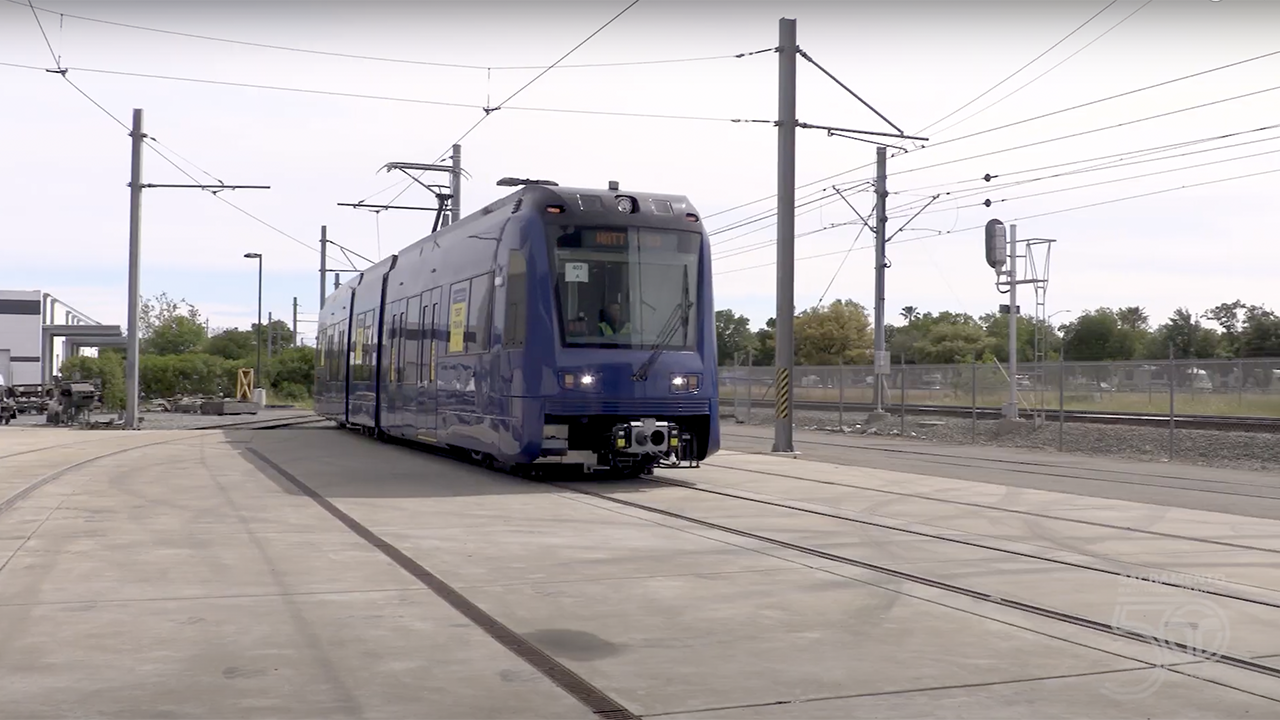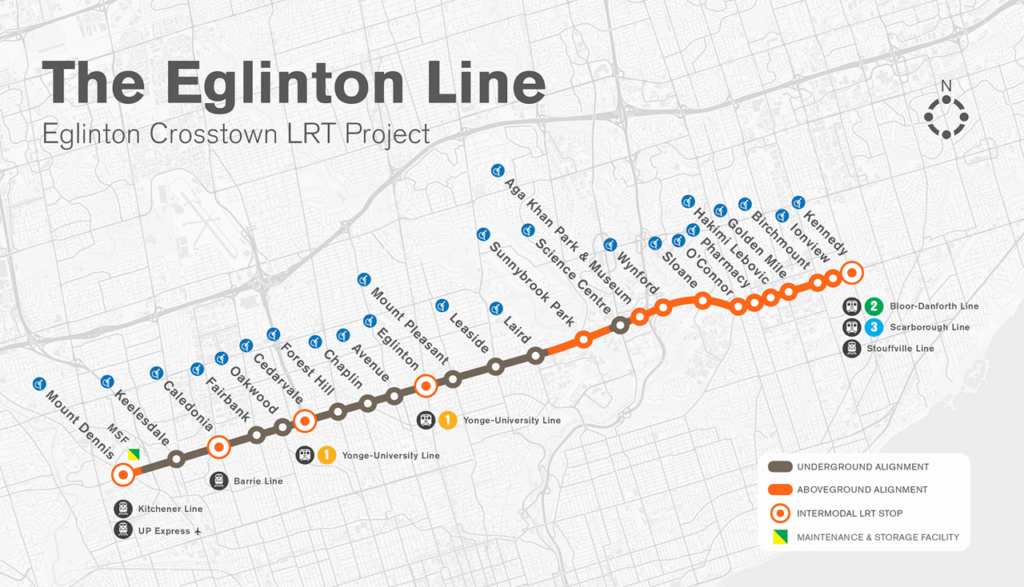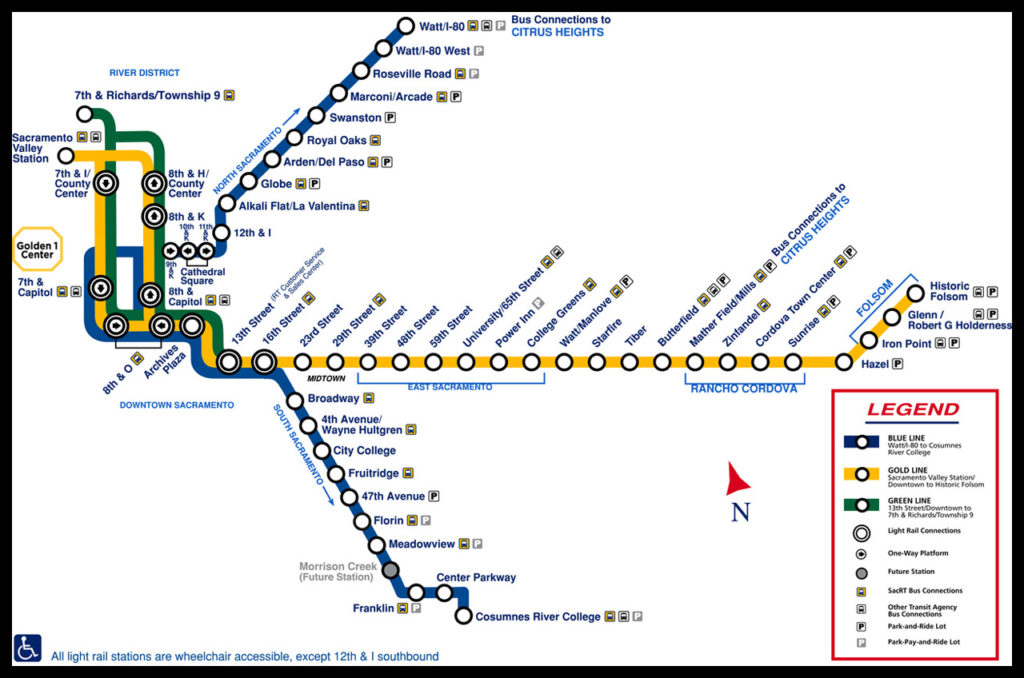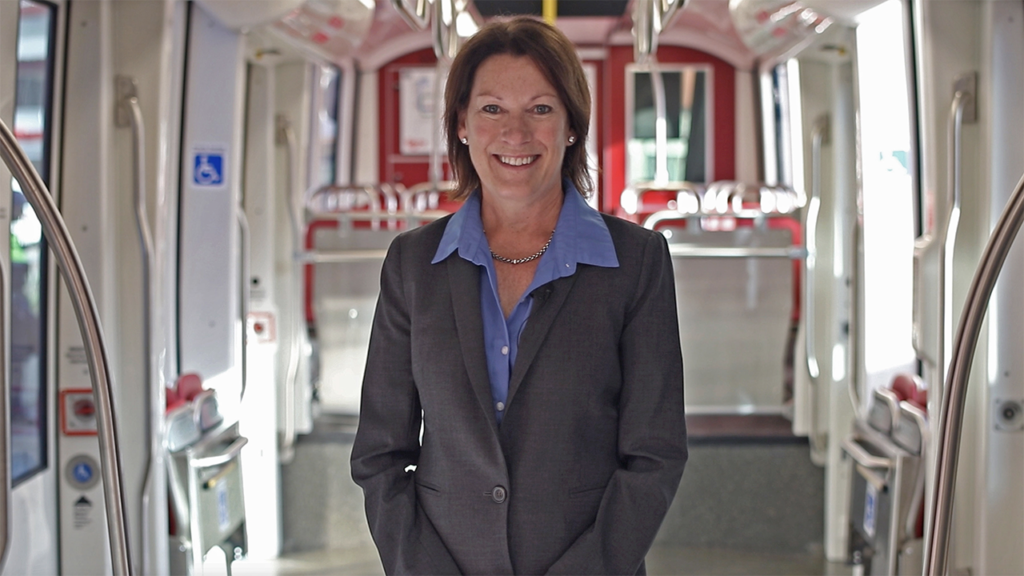
Transit Briefs: BART/MTC, East-West Rail, Metrolinx, NYMTA, SacRT, San Diego MTS
Written by Marybeth Luczak, Executive Editor
SacRT in mid-year 2024 will begin introducing a new fleet of low-floor light rail trains from Siemens Mobility.
The San Francisco Bay Area Rapid Transit District (BART) and Metropolitan Transportation Commission (MTC) are expanding their unlimited transit pass pilot program. Also, a Massachusetts legislative-panel report finds that MassDOT should run east-west passenger rail; Metrolinx addresses the launch date for Eglinton Crosstown LRT in Toronto; New York Metropolitan Transportation Authority (MTA) is considering recommendations for a congestion pricing toll rate schedule; Sacramento (Calif.) Regional Transit District (SacRT) provides a light rail transit-modernization update; and California Transit Association elects San Diego Metropolitan Transit System’s (MTS) Sharon Cooney as Chair.
BART / MTC
A two-year pilot program designed to test how an unlimited transit pass would work in the Bay Area has recorded more than 2 million trips among participants in its first year of existence, according to program co-managers BART and MTC. Using a Clipper BayPass, 50,000 college students and affordable housing residents receive free, unlimited rides on more than two dozen Bay Area transit systems.
The goal of the pilot program, BART and MTC said, is to measure if giving participants a prepaid card that offers unlimited trips and transfers between systems encourages people to take more transit. The latest numbers measuring ridership from the launch of the pilot in August 2022 to August 2023 “paint a clear picture,” they reported: Clipper BayPass cards are logging 40% more trips than the average single-agency Clipper card; there has been a 74% increase in transfers between transit operators; and 85% of Clipper BayPass users agree that BayPass helps them travel to new locations in the Bay Area.
Participants in the first phase of the pilot program include students at UC Berkeley, San Francisco State University, San Jose State University, and Santa Rosa Junior College, as well as residents at affordable housing communities managed by MidPen Housing.
The next phase will launch in January 2024 and involve recruiting and enrolling California Bay Area employers. BART and MTC said the program will expand to include about 20,000 employees from “a diverse range of employers varying by types of industries, employer sizes and geographic locations.”
MTC has allocated $4.5 million to reimburse transit operators for the cost of trips taken during the first phase of the program. In the second phase, participating employers will pay MTC for employee transit passes and MTC will reimburse transit operators for employee trips taken, according to BART and MTC.
“In just its first year of existence, Clipper BayPass is already establishing itself as a shining example of regional coordination among Bay Area transit agencies,” BART General Manager Bob Powers said. “Clipper BayPass is giving us a vision of the future of Bay Area transit and shows if we make transfers between systems more seamless ridership will increase across the board.”
“It’s exciting to see real-world data on the role fare coordination can play in helping to boost transit ridership,” MTC Executive Director Andrew Fremier said. “We want to build a more equitable and seamless fare system for the Bay Area. Studying a regional fare pass using students and residents of affordable housing communities shows that commitment.”
East-West Passenger Rail

The Massachusetts Legislature’s rail panel earlier this month released a report finding that the east-west passenger rail project along the Boston-Worcester-Springfield-Pittsfield corridor should be run by the Massachusetts Department of Transportation rather than a regional rail authority, according to masslive.com.
The Western Massachusetts Passenger Rail Commission’s report also includes a new project price tag: $6 billion. The cost was originally estimated at $3 billion, the media outlet said.
The Healy-Driscoll administration is now reviewing the report.
“Placing responsibility for east-west rail with the Massachusetts Department of Transportation and not creating a new rail authority runs counter to a ‘white paper’ prepared by former Gov. Charlie Baker’s administration in November 2021,” according to masslive.com. “Creating an entity focused on Western Massachusetts passenger rail would be mission-driven and give a unified voice, prioritizing the project.
“This recent report, and that white paper, both recommend that Amtrak operate the actual trains, sell the tickets and market the service. The tracks are owned by CSX.”
According to masslive.com, the Western Massachusetts Passenger Rail Commission report said that MassDOT can implement the service and cited “the state’s ability, with the help of [U.S. Rep. Richard E.] Neal [D-Springfield], to secure a $108 million federal grant for track improvements between Springfield and Worcester. Those improvements alone promise two-hour train trips from Springfield to Boston and two additional trains a day from Springfield to Boston, where only one runs now.”
According to masslive.com, Gov. Healey included $12 million for Palmer and Pittsfield station work in the MassDOT capital plan and $600,000 in her budget for east-west rail project staff, which MassDOT is already seeking.
Metrolinx

Global News has reported that the Eglinton Crosstown LRT’s opening date will not be announced until Metrolinx “is confident trains will begin to run.”
According to a Metrolinx social media post, CEO Phil Verster on Nov. 30 provided the provincial transit agency’s Board a project update, the media outlet said. “‘We will announce an opening date for the Eglinton Crosstown three months before opening day—we are not there yet,’ Verster said,” according to Global News. “He said the construction company building the project was still finding issues with the line that must be fixed before it can be opened.”
Verster, earlier this year, said there was no timeline for opening the 11.8-mile line, and there were approximately 260 testing issues with it, according to Global News. Line construction began in 2011, with a planned 2020 opening. But delays, including the COVID-19 pandemic, resulted in labor and supply chain problems, and there has been litigation between Metrolinx and builder Crosslinx Transit Solution on cost overruns. In September, Verster said he “would hold regular briefings to give the public an idea of where the project was at and what issues continued to delay it,” Global News said.
Further Reading:
- GTHA Update: Ontario Line, Kitchener-Waterloo, Yonge North, Eglinton Crosstown
- Eglinton Crosstown Behind Schedule
- Eglinton Crosstown surges forward
- Eglinton Crosstown under way, underground
New York MTA
The New York MTA on Nov. 30 announced it had received a Traffic Mobility Review Board report (above) that recommends a tolling structure for Central Business District Tolling, New York’s congestion pricing program. The recommendations are to be considered Dec. 6 by the Board of the Triborough Bridge and Tunnel Authority (TBTA), which is coterminous with the MTA Board. The Board will review the recommendations as it considers commencing the rate making process, which includes putting forward a proposed toll schedule for public review, according to the MTA.
The rate making process for Central Business District toll amounts will include “an open, months-long public review process similar to the public review process under the State Administrative Procedures Act (SAPA), similar to review processes regularly undertaken for MTA fare and toll increases,” the MTA said. In addition to a series of hybrid virtual and in-person public hearings, members of the public will have 60 days to offer comments electronically, or via voicemail or U.S. Mail.
Public hearings will be held in February 2024. According to the MTA, when those hearings conclude, the MTA Board will review input received from the public, and then schedule a vote “on whether to authorize TBTA to adopt a Central Business District toll rate schedule to allow for the start of toll collection to proceed at a date that would be announced in advance.”
Additionally, while the public review process is under way, “the vendor that is building out the toll system and infrastructure will continue installing the infrastructure that will be used for toll collection,” according to the MTA, which noted that as of Nov. 30, 60% of the sites are complete.
“I am so grateful that this all-star panel has produced an incredibly thoughtful, detailed and balanced report that points the way forward for effective implementation of congestion pricing,” MTA Chair and CEO Janno Lieber said. “Congestion pricing will mean less traffic, cleaner air, safer streets and better transit.”
SacRT

SacRT on Nov. 29 reported that its $500 million Light Rail Modernization Project is slated to hit “high gear” in 2024, as it adds service frequency, introduces a new fleet of Siemens Mobility S700s, and continues platform modifications along the 43-mile, 53-station system.
Starting in January 2024, SacRT will be extending station closure times for Gold Line platform modifications “to speed the construction timeline.” Also, during the first six months of the year, it will work to add a passing track section near the Glenn/Robert G. Holderness Station in Folsom. This will provide Gold Line riders 15-minute service to four stations from Hazel to Historic Folsom, SacRT said. Currently, trains operate every 30 minutes to Folsom area stations; having a new passing track will allow two trains to operate through Folsom at the same time, doubling service frequency.
By mid-year 2024, SacRT said it will begin introducing a new fleet of low-floor light rail trains. The new trains will be placed into service over the course of the next few years, starting on the Gold Line, followed by the Blue and Green lines.
To accommodate the new low-floor fleet, SacRT said it is currently reconstructing the passenger platforms at Gold Line stations, raising the platform to meet the ramp requirements of the new trains so that passengers can roll or walk directly onto and off them.
San Diego MTS

The California Transit Association earlier this month appointed Sharon Cooney, CEO of San Diego MTS, as the 33rd Chair of its Executive Committee. Cooney succeeds Karen King, CEO of Golden Empire Transit District in Bakersfield.
Cooney served previously as Vice Chair of the Executive Committee during the 2021-2023 term. She also led the Association’s Finance & Management Committee and Transit Operations Funding Subcommittee. The Transit Operations Funding Subcommittee steered the Association’s recent statewide advocacy efforts that secured funding in the State Budget to support agencies’ “most immediate operational needs and recovery from the pandemic,” according to the Association, which has more than 220 member organizations, including transit operators, commuter rail agencies, transit support groups, national and international transit suppliers, and government agencies.
“It’s an honor to take the helm as Chair of the California Transit Association, building upon the tremendous milestones reached as an organization and industry in recent years under the leadership of Karen King,” Cooney said. “This year was marked by a formidable effort led by the Association to save public transit from a devastating budget crisis, resulting in a $5.1 billion lifeline from the State of California to recover the ridership agencies lost from the pandemic.
“California’s public transit industry is taking necessary steps not just to recover, but chart a path forward that is more robust, sustainable and equitable than ever. In addition to long-term funding solutions, the Association will focus on supporting agencies in the transition to zero-emission technologies; addressing passenger safety concerns and homelessness on transit; and enhancing workforce development efforts. While the work is expansive, we are keeping the needs of the riders, workers, families, and communities we serve at the core.”
“As we welcome incoming Chair Cooney, we extend our deepest thanks and gratitude to outgoing Chair Karen King for her steadfast leadership, guiding the Association to major victories amid unprecedented, post-pandemic times,” said Michael Pimentel, Executive Director of the Association.
Cooney was elected alongside new Vice Chair Erin Rogers, who is the CEO and General Manager of Omnitrans headquartered in San Bernadino Valley. Both will serve two-year terms.



